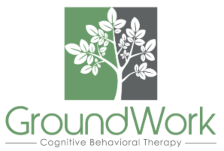Breaking the Worry Cycle
 How to Manage Generalized Anxiety Disorder in Everyday Life
How to Manage Generalized Anxiety Disorder in Everyday Life
Generalized Anxiety Disorder (GAD) can feel like an endless loop of worry—from minor inconveniences to imagined worst-case scenarios. For those living with this constant mental chatter, it’s not just “overthinking.” GAD makes the simplest tasks feel overwhelming, robbing you of peace and focus.
The good news? While the cycle of worry may feel unbreakable, it can be managed. With the right tools and support, you can take back control of your mental health and reclaim your life.
This post will help you better understand the worry cycle, explore practical strategies based on Cognitive Behavioral Therapy (CBT), and show you the lifestyle changes and professional support that can make a difference.
What is GAD and How Does it Impact You?
Generalized Anxiety Disorder is more than occasional worry or situational stress. It’s a condition characterized by chronic anxiety, excessive worry, and tension—even when there is little or no reason to justify these feelings.
Common Symptoms of GAD:
- Persistent worry or fear over everyday situations
- Restlessness or feeling on edge
- Difficulty concentrating
- Fatigue, headaches, or muscle tension
- Trouble sleeping
If you find that these feelings last for months and interfere with your ability to live daily life, it’s possible that GAD is the underlying cause. The first step toward managing it is understanding the worry cycle.
Understanding the Worry Cycle
The worry cycle fuels GAD symptoms. It often starts with a “what if?” thought that cascades into uncontrollable scenarios. For example, worrying about being late to a meeting can spiral into fears about losing your job.
This cycle is hard to stop because the mind feels rewarded by attempting to “solve” the worry. Instead of finding solutions, however, it leads to more stress and keeps the anxiety alive.
But here’s the truth about worry cycles: they are not invincible. With targeted strategies, you can interrupt them before they spiral out of control.
Practical Strategies for Managing GAD
Building skills to manage GAD takes time, patience, and practice, but evidence-based approaches like Cognitive Behavioral Therapy (CBT) can be life-changing. Here are some practical strategies to start using today.
1. Challenge Your Thoughts
CBT teaches us that our thoughts greatly impact our feelings and behaviors. When a worrying thought arises, ask yourself:
- Is this thought realistic?
- What evidence supports or disproves this thought?
- What would I tell a friend experiencing this worry?
This process, called cognitive restructuring, helps you challenge irrational fears and replace them with more balanced thinking.
2. Practice Mindfulness
Worry pulls you into the future, while mindfulness grounds you in the present. Activities like deep breathing, body scans, or focused sensory exercises help reduce mental clutter and restore calm.
Try this quick grounding exercise:
- Observe 5 things you can see around you.
- Identify 4 things you can touch.
- Name 3 things you can hear.
- Notice 2 things you can smell.
- Focus on 1 thing you can taste.
3. Schedule Worry Time
Set aside 15–20 minutes a day to write down your worries. Outside of this “worry time,” remind yourself to delay engaging with those thoughts. This simple act of containment can stop excessive worry from disrupting your entire day.
4. Use Gradual Exposure
Avoiding anxiety-inducing situations may feel comforting in the short term, but it often feeds the worry cycle. Instead, try gradual exposure by facing fears step by step, allowing your mind and body to adjust. For example:
- If social gatherings cause anxiety, start by attending a small, relaxed meet-up.
- Celebrate each “win” to prove to yourself that fears don’t define reality.
Lifestyle Changes That Support Anxiety Management
Managing GAD isn’t just about rewiring your thoughts. Your overall lifestyle plays a critical role in easing anxiety symptoms.
Build a Consistent Routine
Establishing structure in your day reduces uncertainty, which can fuel anxiety. Get into the habit of consistent wake-up times, meal planning, and regular breaks to avoid overwhelm.
Stay Physically Active
Exercise is a powerful stress reliever. Activities like yoga, walking, or strength training release endorphins and help regulate your mood.
Eat for Your Mental Health
Prioritize balanced meals with lean protein, whole grains, and fresh produce while avoiding excessive caffeine or sugar. A healthy diet supports better focus and energy, improving your resilience to stress.
Connect with Others
Isolation often amplifies anxiety. Strengthen bonds with supportive family and friends, or join a local group to connect with others who understand GAD.
When to Seek Professional Help
Sometimes, self-help strategies aren’t enough. If GAD is interfering with your work, relationships, or overall happiness, reaching out to a trained CBT therapist can be a game-changer.
Why Choose CBT?
CBT is one of the most effective treatments for anxiety disorders, focusing on practical, action-oriented solutions. A CBT therapist can:
- Teach you skills to break the worry cycle.
- Help you identify triggers and replace negative thoughts.
- Offer personalized techniques tailored to your needs.
At GroundWork CBT in Orlando, we specialize in helping individuals with GAD build healthier coping mechanisms and regain control. Our licensed and highly trained therapists provide both in-person and teletherapy sessions tailored to your schedule and needs.
Take the First Step Toward Better Mental Health
Living with GAD doesn’t have to define your life. By understanding the worry cycle, implementing practical strategies, and making supportive lifestyle changes, you can take meaningful strides toward managing your anxiety.
Need additional guidance? Take the next step with GroundWork CBT. Call 407-378-3000 today to book your initial appointment with one of our therapists. Start your journey to a calmer, more balanced life.
Ready To Make A Change?
GroundWork is proud to offer both in-person &
virtual Telehealth appointments.
In-Person Sessions: Central Florida
Virtual Sessions: Florida, Maine, South Carolina, Montana, Vermont




















